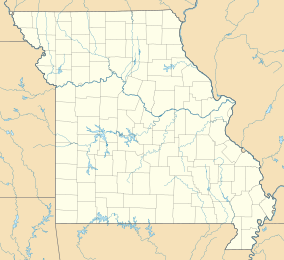Lewis and Clark State Park (Missouri) facts for kids
Quick facts for kids Lewis and Clark State Park |
|
|---|---|
| Location | Buchanan, Missouri, United States |
| Area | 189.13 acres (76.54 ha) |
| Elevation | 781 ft (238 m) |
| Established | 1934 |
| Governing body | Missouri Department of Natural Resources |
| Website | Lewis and Clark State Park |
|
Sugar Lake State Park Open Shelter
|
|
 |
|
| Nearest city | Rushville, Missouri |
| Area | Less than one acre |
| Built | 1934 |
| Built by | Civilian Conservation Corps |
| Architectural style | Rustic |
| MPS | ECW Architecture in Missouri State Parks 1933-1942 TR |
| NRHP reference No. | 85000522 |
| Added to NRHP | February 28, 1985 |
Lewis and Clark State Park is a fun place to visit in Buchanan County, Missouri. It's a public park that covers about 189 acres. The park is located right on the south shore of Lewis and Clark Lake, which is also known as Sugar Lake. This lake is quite large, covering about 365 acres!
At Lewis and Clark State Park, you can enjoy many outdoor activities. It's a great spot for camping under the stars. You can also have picnics with your family and friends. And if you love fishing, the lake is a perfect place to cast your line.
Park History and Name Change
The land for Lewis and Clark State Park was first obtained in 1934. It was a gift from a group of local sports enthusiasts in Buchanan County. When it first opened, the park was called Sugar Lake State Park.
The park's name was changed in 1938. It was renamed to honor the famous explorers Lewis and Clark. These explorers traveled across America between 1804 and 1806. People believe that Lewis and Clark discovered this very lake during their journey. They supposedly named it Gosling Lake back then.
Historic Shelter at Sugar Lake
There is a special building in the park called the Sugar Lake State Park Open Shelter. It was built in 1934. The shelter was constructed by a group called the Civilian Conservation Corps (CCC). The CCC was a program during the Great Depression. Young men worked on projects like building parks and roads.
The shelter is made of stone and sits on a concrete base. It's a great example of "Rustic" architecture. This style uses natural materials to blend with the outdoors. Because of its historical importance, the shelter was added to the National Register of Historic Places in 1985. This means it's recognized as a significant historical site.



